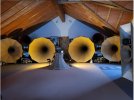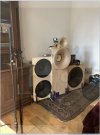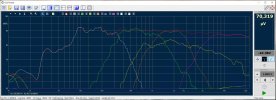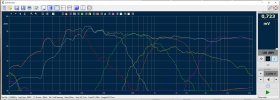- Joined
- Oct 10, 2020
- Messages
- 806
- Likes
- 2,637
Dirac Live gets a clear "A" from me, because I find it provides an optimal level of ease-of-use and configurability for the average user, while still capable of producing very good sounding corrections - but only if an appropriate target curve (which will mainly depend on loudspeaker directivity and how reflective the room is) and appropriate correction limits are selected (I usually only correct below 300Hz or so)!
The default target with full-range correction is IMO not always appropriate and can sound bass-deficient with some systems, while using full-range correction may produce over-processed sounding results. I've tested the basic Dirac Live on PC quite extensively while comparatively testing various DRCs (link to thread).
In the end I still prefer to use manual PEQ based on REW measurements, but that's only because I like to have full control over the correction.
The default target with full-range correction is IMO not always appropriate and can sound bass-deficient with some systems, while using full-range correction may produce over-processed sounding results. I've tested the basic Dirac Live on PC quite extensively while comparatively testing various DRCs (link to thread).
In the end I still prefer to use manual PEQ based on REW measurements, but that's only because I like to have full control over the correction.







